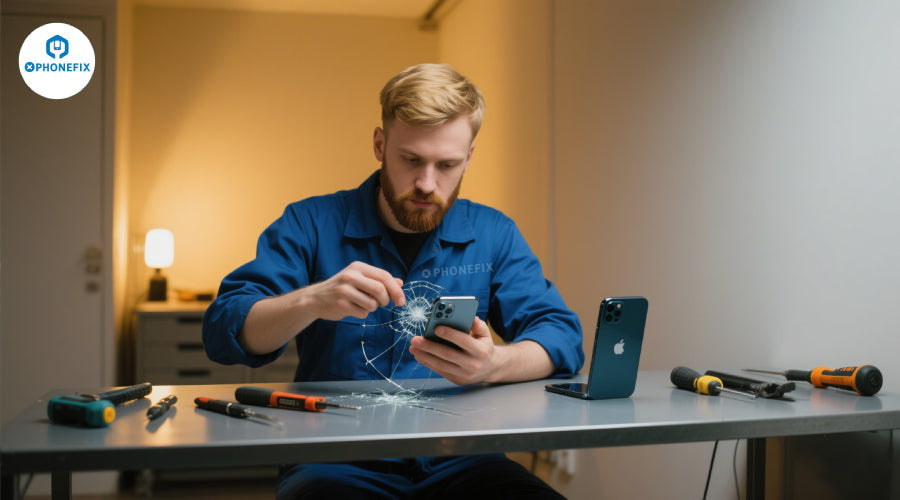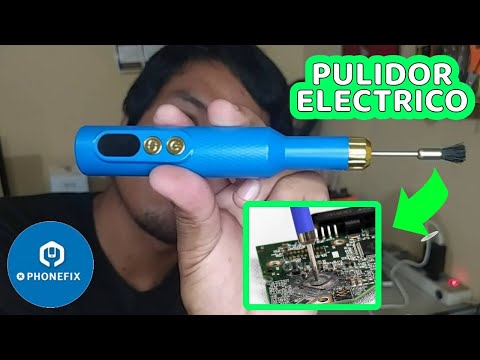The phone fell to the ground with a "snap". When I picked it up, I found that the iPhone Screen was broken into a "spider web". Going to the repair shop is expensive and troublesome. Don't panic! Prepare the tools and follow the Phonefix's guide to easily replace the screen at home and give your phone a new life!
Before starting the repair, accurately assessing the degree of damage to the iPhone screen is the key first step, which will directly determine the difficulty of the repair and the choice of solutions. You can observe from the appearance first: if only the outer glass has slight cracks and no obvious debris, the touch and display functions are normal, it is likely that only the outer screen needs to be replaced. If the screen surface is broken in a large area, the glass falls off, or even the internal liquid crystal layer leaks and black spots, accompanied by touch failure, screen distortion, black screen and other phenomena, it means that the inner screen is damaged and the screen assembly needs to be replaced as a whole.

In addition, check whether the screen is warped around and whether the fit with the body is reduced. If this happens, there may be a risk of damage to the screen cable, and special care should be taken during repair. Only through careful evaluation can you have a clear idea and avoid detours in subsequent repairs.
Top 5 type tools for repairing iPhone screens at home:
Screwdriver: five-pointed star, cross, torque screwdriver, etc., used to remove the bottom and screen connection screws (different models are suitable for different models).
Separation tool: nylon pry bar/triangular pry piece, pry open the shell and separate the cable; suction cup to pull up the screen.
Auxiliary tools: anti-static tweezers to clamp parts, adhesive tape cutter to separate the screen, removal tool to clean the residual glue.
Fixing and installation: Screen Stand to fix the phone; display pressing tool to fit the new screen.
Cleaning and protection: Wet wipes for cleaning; high temperature tape to protect parts; hair dryer to heat and soften stubborn adhesive (10-15cm away from the phone at medium and low temperature).

How to replace iPhone screen at home? (Such as iPhone16)
Before you start replacing the iPhone 16 screen, be sure to read the "Battery Safety" and "Broken Glass Safety" content in advance, and prepare tools such as ethanol wipes or isopropyl alcohol (IPA) wipes, a 6.1-inch repair bracket, and high-temperature tape. First, turn off the phone, use a Torque Screwdriver with a security screwdriver head to unscrew the two security screws on both sides of the USB-C interface, and then use the heated display removal fixture to heat the display adhesive tape. After completion, take out the iPhone and put it into the repair bracket with the display facing up and the USB-C interface aligned with the opening.
Then use the Adhesive Tape Cutter to cut along the sides and top of the iPhone. After the display is loosened, insert the display removal wedge into the corresponding position of the repair bracket, insert the edge of the cutter into the gap between the display and the case, cut both sides at a 45-degree angle, then slide the display and insert the cutter to cut the top. Use the repair bracket suction cup to absorb the display, remove the screws of the display connector and ambient light sensor connector fixing cover, remove the fixing cover, separate the cables, and finally place the display face down.

After disassembly, remove the suction cup from the repair bracket, use Anti-static Tweezers or adhesive tape removal tool to peel off the display adhesive tape at a 45-degree angle, and use a wipe to clean the residual glue stains on the case. Check the grounding spring and internal display clip, and replace and repair them if damaged. When installing a new screen, first peel off the protective film of the replacement display part, check the foam of the top speaker grille, and replace it if it is missing. Align the new display adhesive tape with the case, peel off the anti-stick film in turn and press to fix it, paying attention to avoid the TrueDepth camera.

After the display is attached to the Suction Cup, connect the cables, install the fixing cover and screws, and then peel off the middle layer of anti-stick film. After confirming that the adhesive tape is in the correct state, release the suction cup and fit the display to the case, pressing all around until the display is completely flush with the case.
I believe that after reading this guide, you will be able to repair your iPhone screen and resume using your iPhone as soon as possible. However, there are certain risks in mobile phone repairs. Be careful and follow the steps strictly during the operation. If you encounter any uncertain situations during the repair, or are worried that the device will be damaged by self-operation, it is recommended to contact Apple's official after-sales service or professional repair personnel in time. I hope your iPhone can be successfully "reborn" and continue to accompany you to record the wonderful moments in your life!












